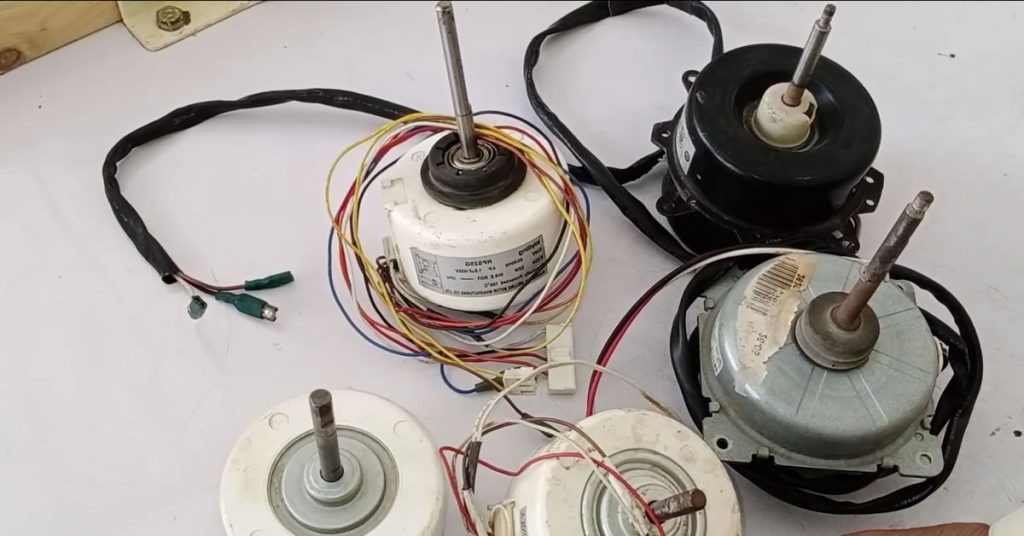-
Fan for Blower Motor:
It is possible to confuse a blower motor fan with a wheel or a cage due to the way that it is shaped. The plastic blades of this device are designed to funnel and direct airflow as the device is turned. This makes it possible for the blower motor of the air conditioner to provide an adequate amount of heated or cooled air to the space. The rate at which the wheel is turning has a direct bearing on the amount of airflow. That, in turn, maintains a consistent temperature across the space.
A resistor module is responsible for regulating the speed of the air conditioner. The blower motor control module is what’s responsible for regulating the speed in modern air conditioners. Innovative electronic circuitry that can change the voltage that is fed into the motor is built into the module. The addition of this feature makes it simpler to adjust the speed of the motor. Additionally, low speeds are possible when operating the fan..
-
Housing for Blower Motor:
The casing shields the blower motor against debris and any other potential threats that may be present. In addition to this, the casing acts as the connection point for the assembly. In addition, the power source for the motor is connected to the housing by means of the electrical harness as well as the connectors. The device needs fuses, a relay, and a resistor in along with the primary circuit board in order to function properly.
Both the resistor, which enables speed regulation, as well as the blower motor’s relay, which connects power to the motor by means of a low current signal, are necessary for the operation of the blower. The blower motor’s resistor is something that can only be found in older versions or those that use the brush-type of motor.
In more modern systems, the resistor role is handled by a module of electronics rather than a physical component. When the blower fails to have housing, then it will be more prone to damage because dirt, grime, oil, as well as moisture will be able to get into its wires.
Main Parts:
- Motor: is both the source of the blower’s power and its primary component. It is the one that is in charge of driving the shaft. The movement of the fan is directly proportional to the operation of the motor.
- Belt: The fan connects directly to the belt, which in turn is attached to the motor shaft through which the belt passes. The movement of the fan is directly proportional to the operation of the motor, which spins the shaft. The fan in certain HVAC systems is driven by a pulley instead of a belt. Some are of the direct drive variety, which means that the motor shaft rotates the blades of the fan without the use of a belt.
- Shaft: The impeller is attached to a shaft in this design. This component draws energy from the torque produced by the motor in order to power the impeller.
- Housing: If the blower does not have housing, it will be more susceptible to damage because of the infiltration of dirt, grime, oil, and moisture into its wires.
- Bearings: Bearings serve to minimize friction among the rotating shaft with the motor so that the impeller can continue to spin in place. Bearings are responsible for keeping the impeller spinning.
- Capacitor: Capacitors enable the motor run as well as start, provide the motor greater starting torque and helps the motor operate more effectively. In addition, capacitors provide the motor extra starting power. It would not start because there isn’t enough torque for turning the blower wheel and fan belt.
Blower Motors and Their Crucial Role:
-
It Forces Chilly Air From the AC:
The fan motor is what actually makes the blower work. As a result, they reroute the air that would otherwise leave your HVAC unit and into the room. There will be a wide range of air conditioner issues, from frozen units to overheating, if the blower motor isn’t working.
-
Prevents Frozen AC Units:
The cooling process generates heat, and the condenser fan expels that heat though the heat pump and the exterior of the unit. Keeping the cooled air within the device can cause it to get extremely cold inside. The frozen air conditioner can be avoided with the use of blower motors, which force the cold air away from the machine.
Diagnosing a Faulty Blower Motor:
-
AC Unit Sounding Like Hummingbird, Whirligig Or Clunk:
If your HVAC system is making an odd noise, it could be the blower motor. When motors break down or malfunction, they can make peculiar noises that sound like loud buzzing or whirring. The most common causes of clunking noise are foreign objects and broken fan blades, although a faulty blower motor might also be to blame.
-
No Cool Air from the Condenser Unit
If your air conditioner is giving you trouble, understanding what the motor of the blower is will help you narrow down the problem. A worn out resistor in a blower motor will not be able to supply enough current to turn on the blower motor, effectively turning off the motor and its associated energy drain. This prevents the conditioned air from being released into the room by the HVAC system.
-
The AC is Freezing Up:
The condensation on the coils that make up the evaporator freezes if the HVAC system is unable to vent the cool air into the room. As the ice melts, water may flow inside your home from your air conditioner.

